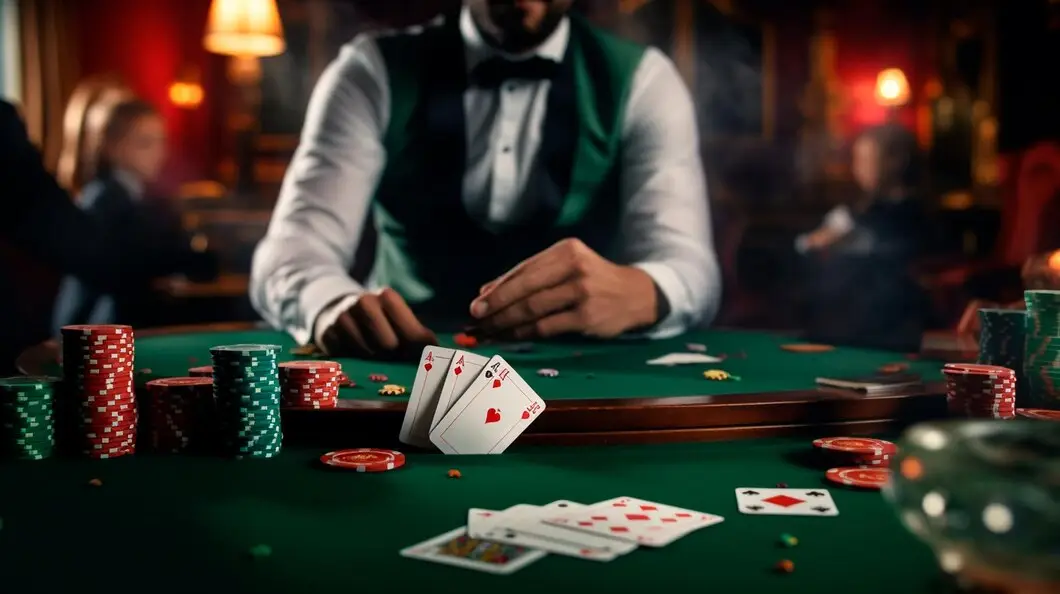Intuition in poker forms an invisible compass that helps navigate the sea of probabilities and human reactions. This skill does not oppose logic but enhances it, turning dry numbers into a living sense of outcome. It is intuition that allows for instant decision-making when standard strategies lose precision.
The Relationship Between Intuition and Analysis in Poker
Experienced players believe that the “sixth sense” in poker is born not out of mysticism but from accumulated experience and constant analysis. The brain registers hundreds of micro-details: eye movements, breathing rhythm, timing of bets. Each hand becomes a micro-experiment where the subconscious accumulates statistics without the involvement of conscious logic.
The role of intuition in poker manifests in instant decisions when numbers and probabilities align with a sense of the “right moment.” Cognitive science research shows that a person can process up to 11 million pieces of information per second but is only aware of 40. The rest forms that very intuition that determines the outcome of a session.
Intuition vs. Logic: Synergy, Not Conflict
Mathematics and strategy lay the foundation. WSOP-level professionals use a mixed approach: analytics set risk boundaries, while intuition adjusts decisions dynamically.
For example, a player notices an opponent’s unusual betting timing. Analysis suggests a balanced decision, but the subconscious signals an anomaly. In such moments, the “sixth sense” becomes a filter between knowledge and action, turning logic into a living act.
How to Develop Intuition in Poker
Developing intuition requires systematic practice, not belief in luck. Neuropsychology asserts that the subconscious learns faster with conscious feedback. A player notes their feelings before acting, then compares the results. This method accelerates the formation of automatic connections between situations and outcomes.
5 working directions:
- Regular session analysis. Reviewing each hand builds an internal database from which intuition is formed.
- Timing control of decisions. Quick reactions train the subconscious to recognize patterns without logical analysis.
- Observing opponents. Behavioral micro-signals—glance, pause, gesture—become material for intuition.
- Practice without cards. Visualizing situations helps the brain model game patterns and reinforce connections.
- Emotional neutrality. Clear perception blocks emotional noise and enhances sensitivity to subconscious signals.
Regular application of these methods gradually forms a stable intuitive mechanism capable of accurately recognizing hidden game patterns.
Psychology and Intuition in Poker
Psychology determines the quality of intuitive decisions. The nervous system reacts to micro-stimuli faster than consciousness can comprehend. Emotional intelligence reduces cognitive noise, allowing one to hear the subtle signal of the inner voice.
Professionals use breathing practices and short pauses before decisions to stabilize their pulse. At a breathing rate of 6 cycles per minute, the parasympathetic system is activated—increasing the accuracy of intuitive responses. These responses are enhanced when the player’s psychology is in balance.
Training the Subconscious for Poker
The subconscious functions as an analytical processor without an interface. It can be trained by creating repetitive scenarios. Intuition develops when the brain can process patterns automatically.
Psychologists call this mechanism “implicit learning.” For example, a series of 10,000 hands in a training format increases the speed of intuitive responses by 38% compared to control. The player begins to feel probabilities rather than calculate them.
When to Trust Intuition in Poker
Intuition becomes reliable only after thousands of hours of observation. The mistake of most is believing in instant inspiration. Trust your “sixth sense” when consciousness and subconsciousness align.
Experienced players use a three-step filter:
- Primary reaction—subconscious signal.
- Instant logic analysis—checking rationality.
- Comparison with experience—final decision.
When these three levels align, the player acts with maximum accuracy and confidence. In such moments, intuition transforms not into a random impulse but into the result of deep internal statistics and experience.
Practical Cases: Intuition vs. Statistics
In 2019, player Jonathan Little during the final hand chose to fold despite a mathematically advantageous call. Intuition suggested a fold, although the winning odds were 65%. Moments later, the opponent revealed the strongest hand at the table. Post-tournament analysis confirmed that the opponent’s micro-gesture and breath delay activated a subconscious signal.
Such cases demonstrate that the inner voice does not oppose statistics but refines it. This is the essence of professional advantage.
Logic, Analysis, and Intuition: Triune Foundation
Intuition in poker becomes effective when logic and analysis work together. The rational part of the brain determines the structure, the subconscious captures the context, and intuition combines them into a single action.
Interestingly, during intense play exceeding 200 hours, the brain reduces the activity of the prefrontal cortex—the center of logical control—and activates the insular zone responsible for intuitive perception. This physiological process confirms that intuition in poker is not belief but a skill based on experience and perception statistics.
Conclusion
Intuition in poker enhances strategy, makes analysis more flexible, and transforms the game into an intellectual ecosystem. Developed intuition creates an advantage not in a single hand but in a systematic approach. Mathematics sets the form, psychology stabilizes perception, experience builds confidence. The combination of these elements creates a player of a new level—an analyst capable of thinking with numbers and feelings simultaneously.
 en
en  de
de  ar
ar  es
es  hi
hi  fr
fr  nl
nl  it
it  pt
pt  el
el 









